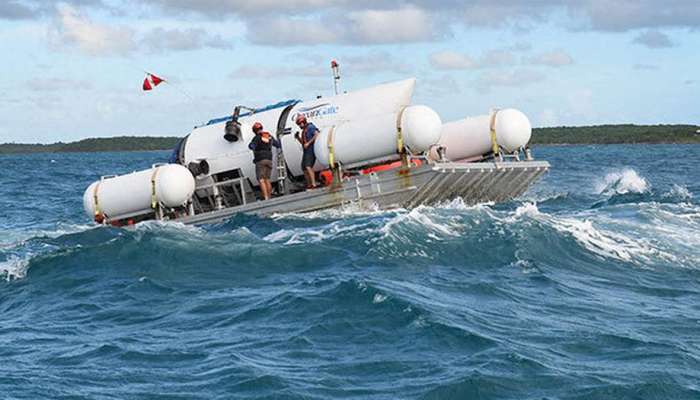
London: Searchers continued for a third day on Tuesday to look for a missing submersible craft that had been due to visit the wreckage of the Titanic.
Fears are growing for the five people aboard, as the vessel only had enough oxygen for up to 96 hours when it set out on Sunday morning.
Who was on board?
Prominent Pakistani businessman Shahzada Dawood and his son, Suleman, were on board the vessel in the North Atlantic, their family said in a statement. British billionaire Hamish Harding is also among the passengers, according to a social media post from a family member.
"We are very grateful for the concern being shown by our colleagues and friends and would like to request everyone to pray for their safety," the Dawood family's statement said.
Dawood is the vice chairman of one of the largest conglomerates in Pakistan, Engro Corporation, which has stakes in fertilizers, vehicle manufacturing, energy and digital technologies.
"As of now, contact has been lost with their submersible craft and there is limited information available," the statement continued.
"A rescue effort that is being jointly led by multiple government agencies and deep-sea companies is underway to reestablish contact with the submersible and bring them back safely."
Harding, a 58-year-old aviator, space tourist, and chairman of Action Aviation, had posted Sunday on Instagram that he was proud to join OceanGate's Titanic mission.
"Due to the worst winter in Newfoundland in 40 years, this mission is likely to be the first and only manned mission to the Titanic in 2023," he wrote.
Harding also said that "the team on the sub has a couple of legendary explorers, some of which have done over 30 dives to the RMS Titanic since the 1980s."
What happened?
The 6.5-metre (21-foot) submersible began its dive on Sunday morning, according to authorities.
The US Coast Guard tweeted that a boat on the surface — the Polar Prince — lost contact with the submarine, called the Titan, about one hour and 45 minutes after it began its descent toward the site of the Titanic's wreckage.
The Titanic is strewn across the seabed some 3,810 metres (12,500 feet) below the surface.
Remoteness makes it a 'challenge'
"It is a challenge to conduct a search in that remote area, but we are deploying all available assets to make sure that we can locate the craft and rescue the people on board," US Coast Guard Rear Admiral John Mauger told reporters in Boston on Monday.
But with no reported sightings of the vessel or communication signals on Monday, the US Coast Guard abandoned its missions before restarting on Tuesday.
Titanic's location unknown for more than 70 years
Famously branded the "Unsinkable Ship," Titanic struck an iceberg shortly before midnight on April 14, 1912, and sunk below the surface less than three hours later.
Before reaching the seabed, the ship split in two, leaving the bow and the stern some 800 metres (2,600ft) apart, with the remainder of the Titanic strewn between.
More than 1,500 people died in the disaster, and the vessel remained undiscovered until 1985. Since then, numerous expeditions to the wreck have taken place, albeit with limited visibility due to its sheer size and remote position — some 400 nautical miles off the coast of Newfoundland, Canada.